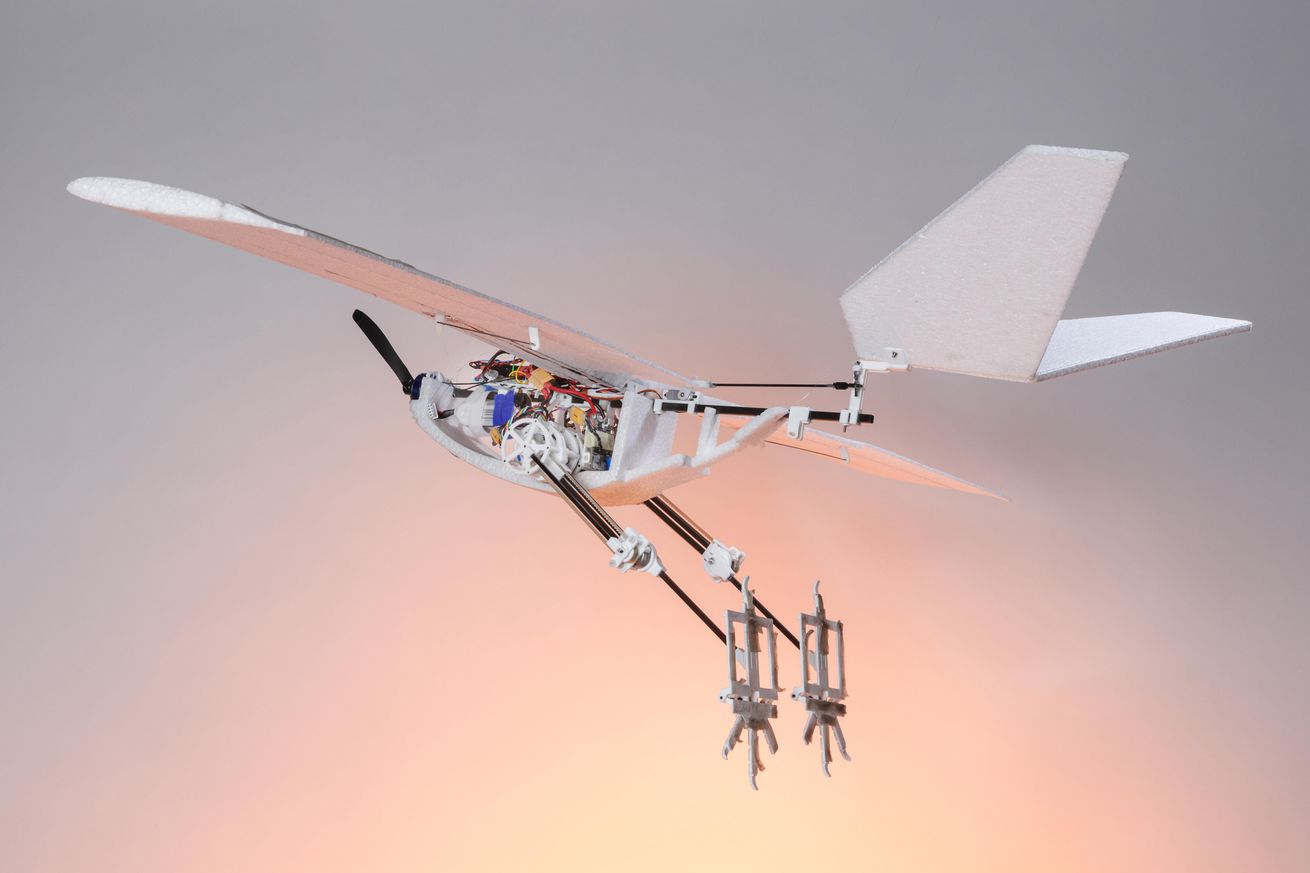
Researchers from the École Polytechnique Fédérale de Lausanne (EPFL) in Switzerland and UC Irvine have developed a drone capable of landing and taking off in areas that would otherwise leave a fixed-wing aircraft stranded. Their Robotic Avian-inspired Vehicle for multiple ENvironments (RAVEN) trades traditional landing gear for a pair of bird-inspired articulated legs that allow the drone to walk around, hop over obstacles, and even leap into the air to take flight without the need for a runway.
Quadcopter drones may offer more flexibility when it comes to where they can take off and land, but most rely on four motors which are less energy-efficient than fixed-wing drones that use a single motor paired with gliding for flight. To expand the capabilities of fixed-wing drones, the researchers took inspiration from birds like crows and ravens which can easily maneuver on the ground using a scrawny pair of legs, as detailed in a paper published in Nature this week.
/cdn.vox-cdn.com/uploads/chorus_asset/file/25776421/EPFL_raven_drone2.jpg)
Image: Alain Herzog
Recreating the strength and capabilities of a bird’s legs mechanically without adding significant weight to a drone and reducing its operating range required a mix of “mathematical models, computer simulations, and experimental iterations.”
The final design for the legs uses a combination of springs and motors to mimic “powerful avian tendons and muscles” while its simplified feet use “two articulated structures” plus toes with a passive elastic joint. The toes not only prevent RAVEN from constantly face planting, they’re also critical for walking and positioning the drone at the right angle of attack for an effective takeoff.
Fixed-wing drones that take advantage of legs for short takeoffs and landings aren’t an entirely new idea. In 2019, a South African startup called Passerine demonstrated a drone called Sparrow that used a pair of spring-loaded legs to leap into the air and take flight from a standstill. What sets RAVEN apart is the complexity of its legs that allow the drone to walk across rough terrain, jump over gaps, and hop onto obstacles as high as 10 inches — in addition to being able to leap into flight.
RAVEN’s operations aren’t limited to airports or areas with smooth surfaces, which traditional wheeled landing gear requires. It also doesn’t require human intervention to get airborne again. It’s capable of landing and exploring areas that may be dangerous or restricted to humans, and then repositioning itself to an area that’s safe for takeoff. And it does it all using less power than a quadcopter drone would, giving it a larger operational range.
























